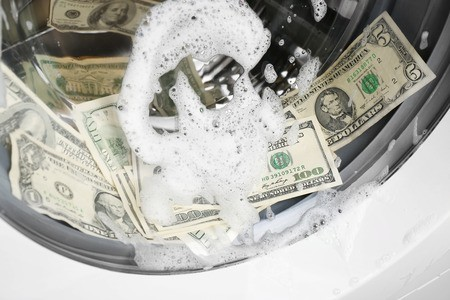Table of Contents
A World of Illusion: Where Crime Wears a Mask of Legitimacy
Imagine a world where stolen masterpieces become glittering skyscrapers, drug empires disguise their profits as charitable donations, and the line between criminal and legitimate blurs beyond recognition. This, unfortunately, is the chilling reality of money laundering a pervasive financial crime that thrives in the shadows, eroding economies and fueling criminal activity worldwide.
This article delves into the murky world of money laundering, providing a comprehensive understanding of its stages, methods, and the devastating impact it has on society. We’ll explore real-world examples to illustrate these concepts and shed light on how authorities fight back against this sophisticated financial sleight of hand.
The Deceptive Dance: Understanding Money Laundering at its Core
At its heart, money laundering is the illegal process of transforming money obtained from criminal activity into seemingly legitimate funds. Imagine a cybercriminal who’s amassed a fortune through online scams. Their money is “dirty” – a direct link to their illegal activities. Money laundering allows them to transform this cash into seemingly clean funds, enabling them to spend it freely without raising suspicion.
Money laundering is a global phenomenon, with estimates suggesting trillions of dollars are laundered annually. This financial crime flourishes in countries with weak financial regulations and strong secrecy laws, but its reach extends far beyond borders. The rise of online banking, cryptocurrencies, and even virtual marketplaces further complicates the process of tracking illicit funds. However, law enforcement agencies and regulatory bodies are constantly adapting, employing cutting-edge technologies and fostering international collaboration to combat this ever-evolving threat.
The Dirty Money Cycle: A Three-Act Play of Transformation

Money laundering can be a complex process, but it typically involves three distinct stages, each playing a crucial role in the transformation of dirty money: placement, layering, and integration.
- Placement: Injecting Dirty Cash into the System (Act I)
The first act involves getting the illegal cash into the financial system. This stage often requires a blend of ingenuity and brute force. Criminals often break down large sums of money into smaller deposits to avoid triggering bank reporting requirements. They might utilize cash-intensive businesses like laundromats or car washes to “wash” the money by mixing it with legitimate income. Casinos and money service businesses (MSBs) can also be exploited for placement, depending on the vulnerabilities in regulations.
Real-World Example: Laundering Through Luxury Cars
Imagine a notorious drug cartel operating in Southeast Asia. They possess millions of dollars in cash obtained from the illegal drug trade. To launder this money, the cartel might employ several tactics. One approach could involve purchasing high-value, luxury cars with cash. These cars, often with inflated prices, become a way to “convert” dirty money into a physical asset. The cartel could then sell these cars through seemingly legitimate dealerships, pocketing the “clean” proceeds. This not only injects the dirty money into the system but creates a paper trail that appears legitimate, making it harder for authorities to track the origin of the funds.
- Layering: Obfuscating the Trail with Financial Shenanigans (Act II)
Act II focuses on creating distance between the dirty money and its criminal source. This often involves a series of complex financial transactions designed to confuse and mislead investigators. Criminals might move the money through multiple bank accounts, shell companies (fake businesses created to disguise the source of funds), or even wire transfers across different countries with lax financial regulations. The aim is to create a convoluted financial trail that makes it difficult for law enforcement to track the origin of the money.
Real-World Example: The Artful Deception
Let’s revisit our art smuggler example from earlier. They might wire the money from their European bank accounts to offshore accounts in havens with strict secrecy laws. These accounts could be held in the names of shell companies created specifically for this purpose, each transaction adding another layer of anonymity. Additionally, the art smuggler could purchase high-end artwork with the laundered money. Artworks, due to their high value and ease of transport across borders, can be a preferred method for money laundering. The art can then be sold through auction houses or private deals, further obfuscating the origin of the funds.
- Integration: Re-entering the Clean Economy with a New Identity (Act III)
The final act involves reintroducing the laundered money into the legitimate economy, appearing to come from a seemingly legal source. Criminals might invest in real estate, luxury goods, or even start legitimate businesses. This “clean” money can then be used to finance further criminal activities or enjoyed as a reward for their illicit deeds.
A Final Thought
While the placement, layering, and integration stages are common, money laundering schemes can take many forms depending on the type of criminal activity and the resources available. Money laundering is not just a financial crime; it undermines the very foundation of a healthy economy and fuels criminal activity that threatens our security.
By understanding the methods used by criminals and supporting efforts to combat them, we can help create a world where legitimate businesses and honest individuals can thrive.
Dilanka | KDCW Non-profit org
Discover more from Charity Organization | NGOs and Nonprofits Sri Lanka | Charity Foundation | Charity Shop
Subscribe to get the latest posts sent to your email.

